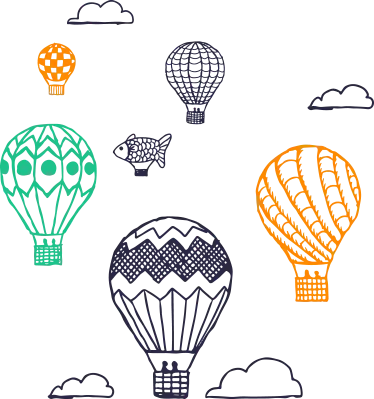
Exploring Iranian Culture: A Rich Tapestry of Tradition and Heritage
Iranian culture is one of the oldest and most diverse in the world, shaped by thousands of years of history, religion, art, and tradition. As the heart of the Persian Empire, modern-day Iran has inherited a vast cultural legacy that continues to influence not only its people but also the broader Middle Eastern and Central Asian regions. This article delves into the many facets of Iranian culture, from its ancient roots to its contemporary manifestations.
1. Persian History and Civilization
The roots of Iranian culture go back over 2,500 years, beginning with the rise of the Achaemenid Empire in 550 BC. Persia was a center of power, knowledge, and art, with notable contributions in architecture, governance, and philosophy. The fall of the empire and the rise of subsequent dynasties, such as the Parthians and Sassanids, further shaped Iran's cultural identity, which thrived even during periods of conquest.
The legacy of these ancient civilizations is visible in Iran’s historical landmarks, such as Persepolis, Pasargadae, and Naqsh-e Rustam, which stand as monuments to Iran's rich past.
2. Language: The Persian Language (Farsi)
Farsi, or Persian, is the official language of Iran and is one of the country’s most enduring cultural symbols. It is a language of poetry, philosophy, and diplomacy, used by some of the greatest literary figures in history. Iranian poets like Hafez, Saadi, Omar Khayyam, and Rumi are revered globally for their profound philosophical and mystical writings. Even today, the Persian language is seen as a beautiful and expressive medium of art, poetry, and communication.
3. Persian Art and Architecture
Iranian art and architecture are renowned for their intricate designs, vibrant colors, and symbolic meanings. Iranian craftsmen have excelled in various forms of art, including:
- Miniature painting: A delicate and intricate form of illustration often depicting scenes from Persian epics or poetry.
- Carpet weaving: Iran is famous for its Persian carpets, known for their rich designs and fine craftsmanship.
- Calligraphy: Persian calligraphy, particularly Nastaʿlīq, is an elegant art form that combines beauty with literary expression.
Persian architecture is also known for its grand palaces, mosques, and bridges, adorned with exquisite tile work, such as the Shah Mosque in Isfahan, which features intricate blue and turquoise mosaics and geometric patterns.
4. Religion and Spirituality
Religion plays a significant role in shaping Iranian culture. The vast majority of Iranians practice Shia Islam, which is the official religion of the country. However, Iran’s religious landscape is diverse, with historical ties to Zoroastrianism, an ancient religion that originated in Persia and greatly influenced its cultural values. There are also minority communities of Christians, Jews, and Bahá'ís in Iran.
Islamic holidays and traditions, such as Nowruz (Persian New Year) and Ashura, a day of mourning for Imam Hussein, are central to the spiritual and social life in Iran. These events bring people together in religious observance, communal reflection, and celebration.
5. Iranian Festivals and Celebrations
Iran’s cultural calendar is filled with numerous celebrations that blend ancient Persian traditions with Islamic beliefs. Some of the most significant festivals include:
- Nowruz: Celebrated at the spring equinox, Nowruz marks the Persian New Year and is one of the most important festivals in Iranian culture. Families gather to clean their homes, prepare special dishes, and exchange gifts to celebrate the arrival of spring.
- Yalda Night: The longest night of the year, Yalda is celebrated with family gatherings, storytelling, and eating fruits like pomegranates and watermelons, which symbolize light and hope.
- Chaharshanbe Suri: The fire-jumping festival held on the eve of the last Wednesday before Nowruz. People light bonfires and leap over them, symbolizing purification and renewal.
6. Cuisine: A Taste of Persia
Iranian cuisine is a reflection of the country’s geographical and cultural diversity. It is characterized by the use of fresh herbs, saffron, pomegranates, and spices, resulting in rich flavors and aromatic dishes. Some staple Iranian dishes include:
- Chelo Kebab: A simple yet popular dish made of grilled meat, usually served with saffron rice.
- Fesenjan: A savory-sweet stew made with pomegranate molasses and walnuts, typically served with poultry.
- Tahdig: The crispy layer of rice at the bottom of the pot, which is a much-loved element of Persian meals.
- Ash Reshteh: A thick soup made with noodles, beans, and herbs, often served with whey (kashk).
Iranian hospitality often revolves around food, with guests warmly invited to partake in elaborate meals. Sharing a meal is seen as a gesture of kindness and community.
7. Music and Dance
Iranian music, with its unique melodic structures, has played an integral part in cultural celebrations, religious ceremonies, and daily life. Classical Persian music, known for its emotional depth, is built on a system of modes called dastgah, which are the musical scales used to compose pieces. Traditional instruments such as the tar (a type of lute), santur (a type of hammered dulcimer), and kamancheh (a string instrument) are commonly used.
Although dance is restricted in public settings due to religious and cultural reasons, traditional dances such as the Bandari (a lively dance from southern Iran) and Kurdish folk dances are still performed in private and regional festivities.
8. Family and Social Structure
In Iranian culture, the family is considered the cornerstone of society. Families tend to be close-knit, with strong ties between generations. Respect for elders is highly valued, and it is common for multiple generations to live together or maintain close relationships.
Hospitality is another defining feature of Iranian society. Guests are treated with utmost respect and generosity, and offering tea, sweets, or a meal is a common practice when visitors come to a home.
9. Literature: The Legacy of Persian Poets
Iran’s literary tradition is deeply rooted in its past, with poets like Ferdowsi, Hafez, and Saadi still widely read and respected. Persian poetry often reflects themes of love, nature, and mysticism, with works like Ferdowsi's Shahnameh (Book of Kings) recounting the mythical history of Persia. Rumi, one of the most famous Sufi poets, continues to influence not only Persian-speaking people but also global spiritual and literary circles.
Conclusion Iranian culture is a unique blend of ancient traditions and modern influences, shaped by centuries of history, religion, and art. It is a culture of hospitality, artistic expression, and spiritual depth, offering a glimpse into a rich and complex heritage. Whether through its poetry, cuisine, architecture, or festivals, Iranian culture continues to captivate and inspire both locals and visitors alike.





